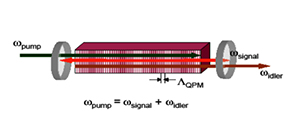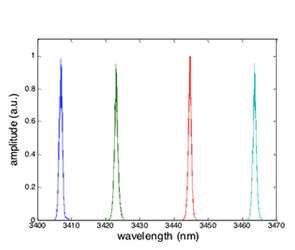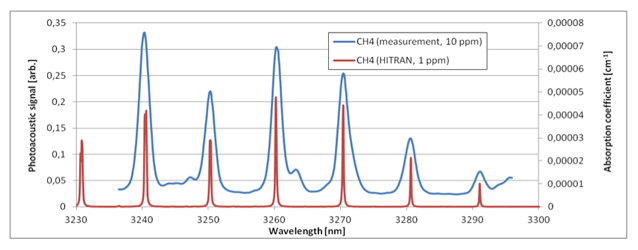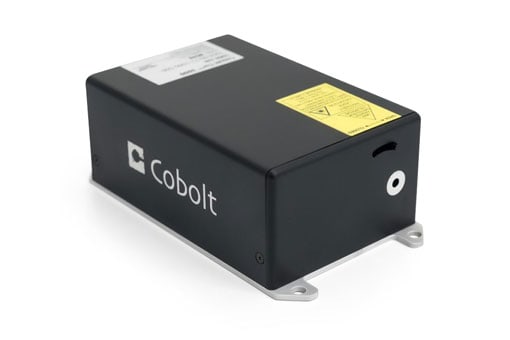Lasers for Gas Sensing
OPO-based PAS provides ultimately fast and sensitive trace gas analysis
The photoacoustic infrared spectroscopy (PAS) is a very promising technology for trace gas detection and analysis in environmental or atmospheric monitoring, industrial process control or medical diagnostics. PAS is based on exciting rotational and vibrational states of gas-molecules with infra-red light pulses.
The absorbed energy translates into kinetic energy pulses, which form an acoustic wave that can be detected with a microphone. In this way PAS can provide a sensitive and selective, compact and robust, multi-gas analyzer with wide dynamic range and fast response time. Recent development in technologies for MEMS fabricated cantilever microphones with optical laser readout combined with availability of new monochromatic and tunable mid-IR light sources with high output powers has enabled demonstration of PAS instruments with ppb-level sensitivity and very broad selectivity.

Schematics of signal-resonant OPO based on QPM nonlinear optical crystal.

Continuous spectral tuning of the Cobolt OdinTM OPO over 60 nm.
The Cobolt Odin Mid-IR source is in many aspects the most ideal choice for driving PAS instruments. The Cobolt Odin Mid-IR laser is based on an ultra-compact Optical Parametric Oscillator (OPO), which is a non-linear optical device that down-converts the wavelength from a pump laser into two longer wavelengths in an optical resonator. The emission wavelengths depend on the configuration of the nonlinear optical crystal (NLO) and the accessible wavelength span is ultimately limited only by the transmission window of the NLO. This very broad spectral selectivity and tuning capability is a general advantage of OPOs over other mid-IR light sources. More specifically OPOs can provide high output pow-ers and freely selectable wavelengths in the 2.8-3.6 µm range which is an especially important wavelength range for sensitive hydrocarbon detection as it encompasses some of the strongest fundamental molecular transitions of several pollutive or poisonous industrial chemicals such as BTX, C2H2, CH4, HCN, HCL, HF etc. Moreover, the broad tuning capability of OPO compared to other mid-IR technologies allows for multi-gas detection of several components with common signal processing and chemometrics. In the Cobolt Odin Mid-IR laser both the pump laser and the OPO resonator is assembled into a single hermetically sealed package using the company’s proprietary HTCureTM Technology for compact and robust laser assembly.

Detection of CH4 using OPO-PAS with a Cobolt Odin tunable Mid-IR laser (95 mW). The detection limit was found to be 3 ppb at 1 s integration time. (Co Gasera Ltd, Turku, Finland)
The all-integrated laser head package measures only 125x70x45 mm and is insensitive to varying ambient conditions (e.g resistant to 60G shocks and exposure to -20 oC to +70oC cycling), bringing the OPO technology to a new scale of size, reliability and easy-of-use that enables integration into compact instrumentation for in-field trace gas detection.
The numerous promising applications for the compact OPO-PAS technology include for instance the environmental monitoring of methane (CH4), ethanol monitoring for automotive evaporative measurement and the multi-component analysis of BTX for industrial emissions monitoring and process control. In these applications the OPO/CE-PAS technology has a great potential to overcome the limitations in sensitivity and selectivity of the well-accepted conventional FTIR spectroscopy.
Related products

Cobolt Odin™ Series
Tunable Lasers Mid-IR
Wavelength: 3264 nm – 4330 nm
Power, pulse rate: 60 – 80 mW, 10 kHz
Applications: PAS, LIBS, photoacoustics

